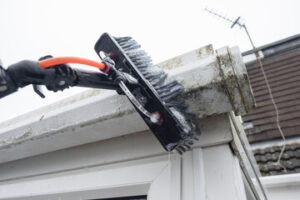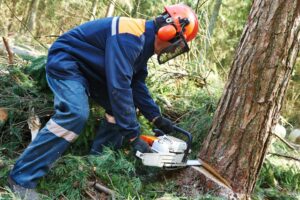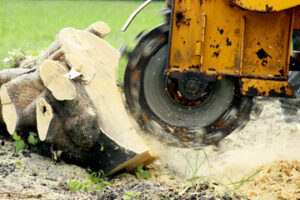Backlinks are one of the most important aspects of a successful SEO strategy. However, achieving them can be difficult. It requires a combination of quality content, relevant pitches, and solid networking skills.

Adding the UGC attribute to your links can help you build backlinks for your site. This is especially useful for resource pages or blog posts that contain unique content, such as expert interviews or proprietary research. Visit https://www.helenaseopros.com/ to learn more.
Link building is a key part of content marketing. It involves getting other websites to link back to yours, which increases the visibility of your content and can improve search engine rankings. These links are a signal to Google that your website is relevant in its niche, and the more of them you have, the better. In addition, they help you gain credibility and authority. It’s important to know how to get high-quality links, however, because the wrong ones can damage your rankings. You also need to avoid using manipulative techniques, as these can get your site banned from search engines.
Creating and maintaining high-quality content is one of the best ways to build links. Link building can be a time-consuming process, but the rewards are worth it. To get started, create a list of keywords that are related to your content and then find other blogs or websites that may be interested in linking to it. Using a tool like Semrush will make it easy to track your competitors’ SEO efforts and find opportunities for link building.
To build high-quality links, you must create interesting content that is worth sharing. If your content isn’t useful or informative, no one will want to link to it. To ensure that your content is relevant, research the audience of each blog or website you want to target. It’s important to focus on your niche and avoid repeating what other bloggers are saying.
Another way to build links is by submitting guest posts. This can be a great way to attract traffic and build a loyal following. However, it’s important to remember that not all sites will accept your request. Those that don’t will be penalized by search engines, so you should only submit guest posts to reputable websites.
It’s also important to use different techniques for each type of content. For example, you might write an article about a new technology and then submit it to a tech news site. If you’re a food blogger, you might write an article about chia seeds and share it with a health food blog.
Link insertion
Link insertion is the process of inserting links into existing content on other websites. It is an effective way to build backlinks and improve your website’s SEO. It can also help you build trust and credibility with your target audience. However, it is important to use this strategy responsibly. If you use it too aggressively, you may risk a Google penalty and lower your search engine rankings.
To begin the link insertion process, find relevant websites that offer content that is related to your niche. Then, use a tool like Ahrefs or SEMrush to find broken links on those sites. Once you have a list of potential opportunities, reach out to the website owner and offer to create replacement content for their broken link. This will help them fix their site and give you a high-quality backlink.
One of the key benefits of link insertion is that it can be done more quickly and cost-effectively than traditional methods of backlinking, such as writing guest posts. This is because you’re leveraging content that already exists on a popular publication. Moreover, this approach is more reliable and stable than other forms of backlinking, as it’s less susceptible to algorithm changes.
When used properly, link insertion can provide long-term benefits for your site’s SEO. In addition to boosting your search engine rankings and increasing traffic, it can also establish your website as an authority within your industry or niche. By linking to other reputable publications, you’re essentially vouching for the quality of their content. This can lead to higher brand visibility and trust, which ultimately leads to greater revenue.
The best link insertion strategy involves using the right keywords and targeting relevant websites. It’s essential to monitor and evaluate your backlink profile regularly. You should also avoid over-optimizing your anchor text, as this can result in Google penalties and lower your rankings. You can also use the disavow tool to remove harmful links from your website.
The final step in a successful link insertion campaign is to follow up with your outreach emails. This will ensure that the publisher remembers your message and takes action. Moreover, it will help you keep track of the results of your efforts.
Broken links
Broken links, whether inbound or outbound, are bad for your website. They can lead to 404 errors, which will reduce search engine optimization (SEO) performance. To ensure a positive user experience, it’s important to regularly check for and fix broken links.
While it’s impossible to completely avoid broken links, there are a few things you can do to prevent them. For example, you can use 301 redirects to move pages to new URLs. This lets search engines know that the page has moved permanently, and will pass link equity to the new location. Alternatively, you can use 302 redirects to indicate that the page has temporarily moved.
Another way to prevent broken links is by using relative paths instead of absolute ones. This will make it easier for search engines to index the page. Another good option is to create a custom 404 error page that provides useful information and navigation options for visitors.
It’s also a good idea to use internal resources when linking to external content. This will help you avoid relying on third-party sites and will minimize your risk of losing valuable inbound links. However, if you do have to link to an external resource, you should prioritize fixing those that drive the most organic traffic or conversions.
In addition to reducing your SEO performance, broken links can also hurt your site’s user experience. This is because users may be redirected to an irrelevant or unhelpful 404 error page. It’s also possible that they might not be able to find the content they’re looking for, leading them to abandon your site.
One way to identify broken links is to manually click on each link on your website. Start with webpages that are higher in your site hierarchy and work your way down. You can also use a tool like BrokenLinkChecker to identify broken links and provide solutions. It’s also important to encourage your website visitors to report any broken links they encounter. This not only helps your SEO but can also build trust and brand recognition. You can then review the results of your manual checks and take appropriate action.
Guest blogging
Guest blogging is a marketing tactic that involves penning articles or blogs on other websites in exchange for a link back to the author’s website. It became a darling of the SEO world in the early 2000s when search engines weighed backlinks like gold. Then, things took a turn when some websites began churning out low-grade, spam-ridden content to attract backlinks. As a result, search behemoth Google rehashed its algorithms, casting guest posting in a more suspicious light.
However, if used correctly, guest blogging can help you improve your website’s search engine optimization (SEO) and establish your brand as an authority in your niche. To achieve this, you must have clear SEO goals and execute thoughtful outreach. This will ensure that your content is well-positioned to secure high-quality backlinks. In addition, you should focus on creating cornerstone content, which are pages that provide comprehensive information on a topic. This will allow you to build an engaged audience and earn more social media engagement.
In order to maximize the benefits of your guest blog posts, you must identify and research potential sites that accept guest contributions. Using tools such as SEMrush and Ahrefs can help you identify the top-performing blogs in your niche or industry. This can give you insights into the types of content that are working best for your competitors and help you target similar opportunities.
Moreover, you should be open to feedback from the host site’s editors and make necessary revisions. It’s also important to disclose any relationships or affiliations that may affect the integrity of your content. This will help you avoid any penalties from search engines or duplicate content issues.
Finally, it’s important to remember that the goal of guest blogging is to get the best return on investment (ROI) possible. To do this, you should track your performance metrics and measure the impact of each post. These metrics can include referral traffic, SEO rankings, and other indicators of success. Keeping track of your ROI will allow you to adjust your strategy and optimize for maximum results.
Lastly, you should be aware of SEO guidelines and laws regarding guest posting. Non-compliance can lead to severe consequences, including penalties from search engines. These penalties can range from a drop in search engine ranking to a complete deindexing of your website.






